The Emoji (R)evolution At Work
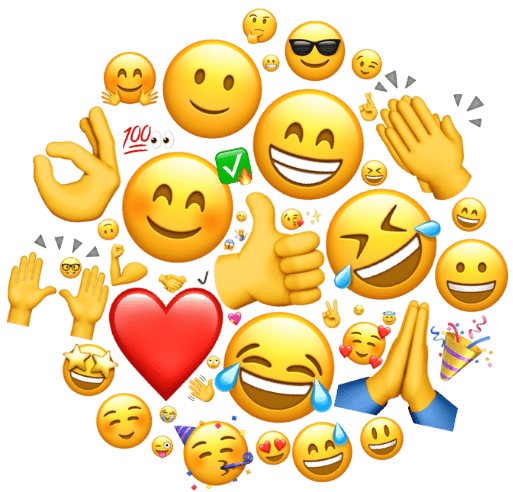
Appreciating Slack and Duolingo’s emoji research 😍 we at Fingerprint for Success (F4S) were curious to study the potential impact emojis might be having on different generations, different work environments and who is using emojis in their daily work lives.
F4S’ research into emoji use at work isn’t solely about communication style or preference – it digs deeper to find insights into attitudes and motivations including how emojis impact connection, collaboration and productivity.
These findings can be used by teams around the world to understand how to bring out the best in people, celebrate their uniqueness and empower teams to identify and predict the best ways to collaborate and connect.
But first, what is F4S?
Fingerprint For Success (F4S) is a web-app that uses layered technology, data and conversational AI to empower individuals and teams to achieve amazing things together. Based on over 20 years of research, F4S’s revolutionary predictive analytics have achieved over 90% reliability in forecasting personal and team motivations, behaviors, and performance. In 2021, F4S launched the world's first AI Coach 'Marlee' to help users to optimize their talents and bring out the best in themselves and their teammates.
What did we measure? 🤔
From July 7 to 12 2023, we pioneered a global study called The Emoji (R)evolution At Work. F4S surveyed more than 2,000 people from 94 countries around the world, with a range of respondents:
- From different age brackets (Gen Z, Millennials, Gen X and Baby Boomers)
- With preferred pronouns (she/her, he/him and /they/them)
- Working in different environments (remote-first, hybrid and office) and
- In different roles at work (Manager/Team Lead, team member and intern).
Additionally, we asked respondents key questions to gain further understanding about emoji usage at work, including how frequently they’re used, how emojis impact certain facets of their work (connection, collaboration and productivity) and which emojis they do (or don’t) use at work.
We also analyzed respondent’s motivational work traits (48 traits in total) to identify if there are any correlations between the frequency emoji’s are used and what motivated people at work. So, what did we find? 🔎
Overall, emojis are a winner in the workplace: 88% of respondents use emojis, with 45% using them daily at work!
It’s no secret that in today’s hybrid workforce that emojis have established a strong presence around the world. Of the 94 countries we surveyed, while almost half of the respondents use emojis daily at work (45%), a mere 2% of people don’t use them at all.
Tech-loving, early adopters who like to move fast are more likely to use emojis
Benchmarking against F4S motivational work traits, the respondents who are high in certain motivations (Tools, Alternatives, Structure, Initiation, Difference and Future) were the ones with the largest bias towards emoji use.
These people are energized by using emojis as a tool to organize and plan aspects of their work, especially because of the variety of options available. They also likely enjoy using emojis as a way to quickly respond to messages (like texts and Slacks), experimenting with different combinations of emojis to make sure their message is received in the way they want it to be.
On the flip side, respondents who were higher in other motivations (Depth, Place, Use, Reflection and Patience) are the least motivated to use emojis. What this tells us is that people who prefer to pause and reflect so they can consider where and how to use emojis may find selecting emojis draining or challenging.
Emojis have a high impact on connection and collaboration, and also amplify productivity
The interactions and relationships we share with our workmates can have a big impact on how connected we feel at work. In our study, 93% of respondents believe that emojis have an impact on how connected they feel at work. Similarly, 72% think that emojis have a meaningful to high impact.
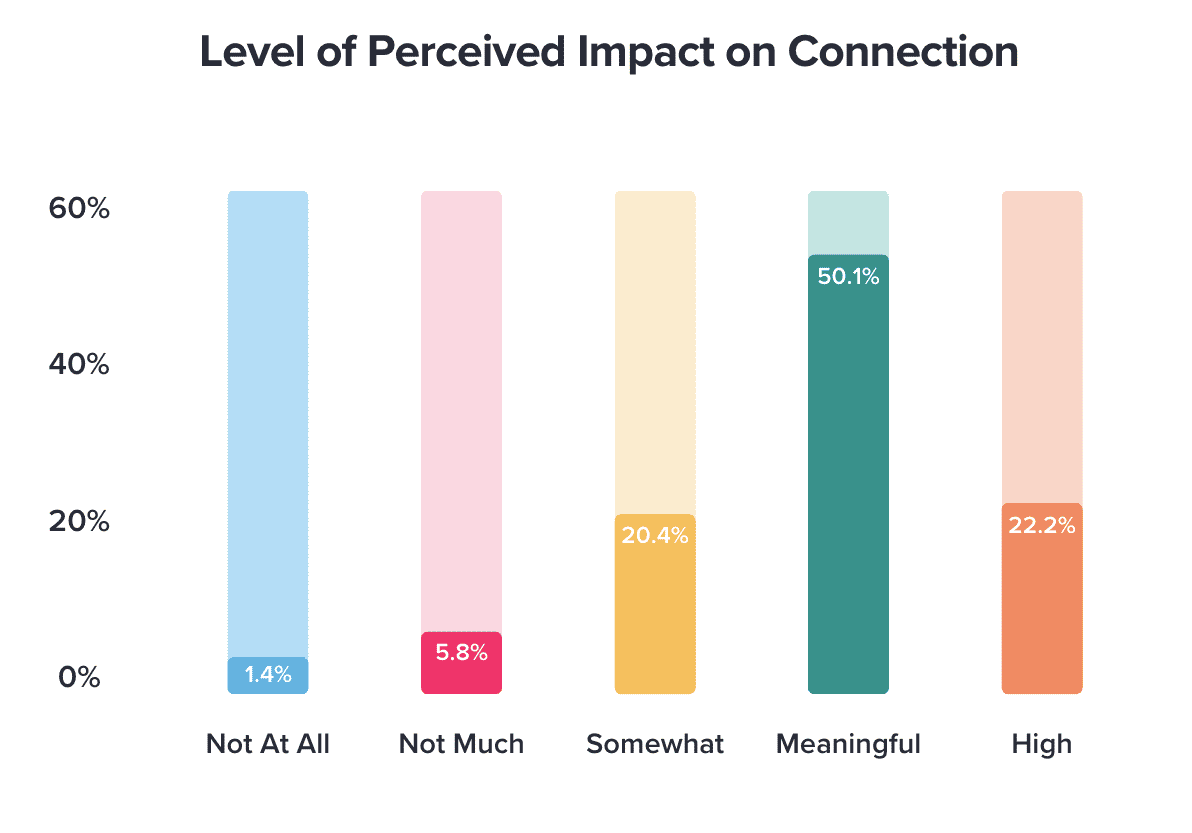
It’s a similar story when it comes to collaboration, which, in a work context, is a work style that supports how people work together in beneficial ways. 86% of respondents said that emojis impact collaboration and 61% shared that that impact is very meaningful.
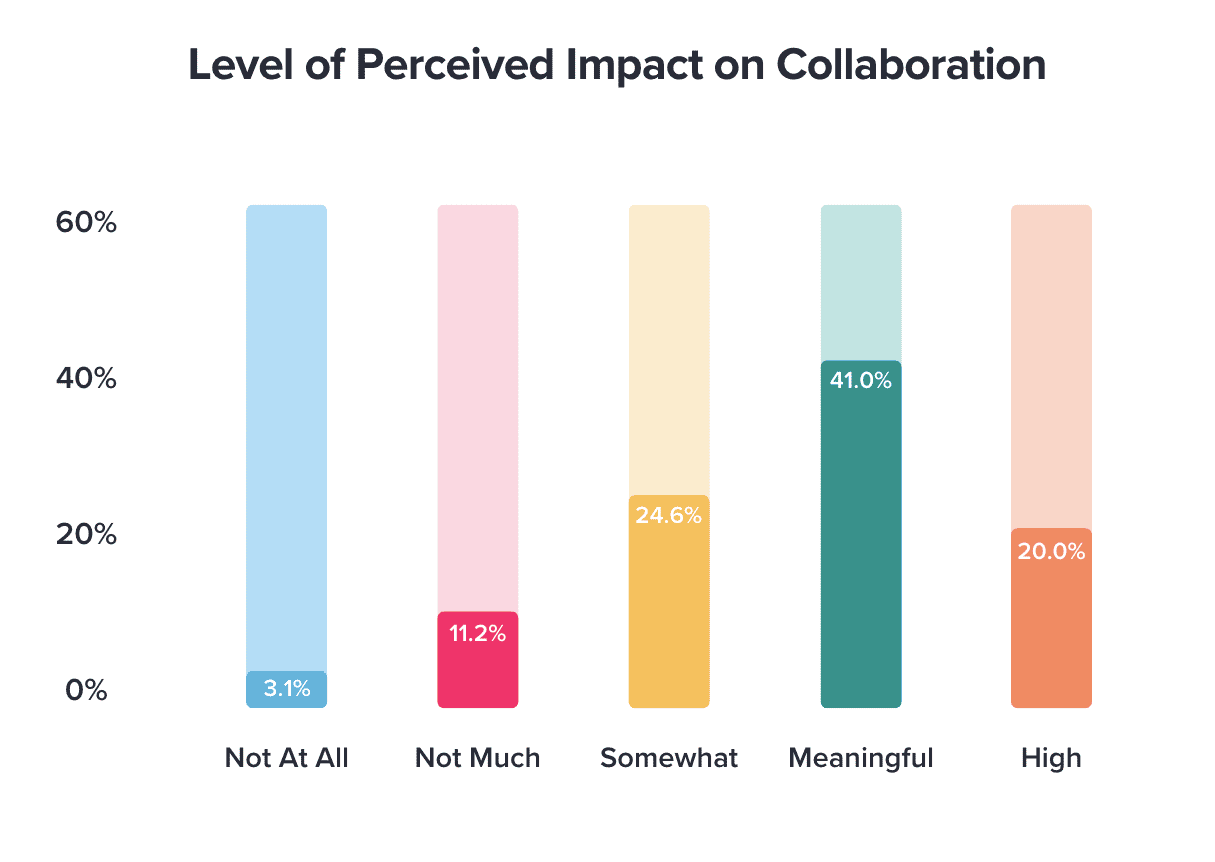
We also found a potential link between emojis and productivity, too. Of all respondents, 72% think emojis impact their productivity – which is how well they’re able to perform at work – while 40% believe that emojis have a meaningful to high impact.
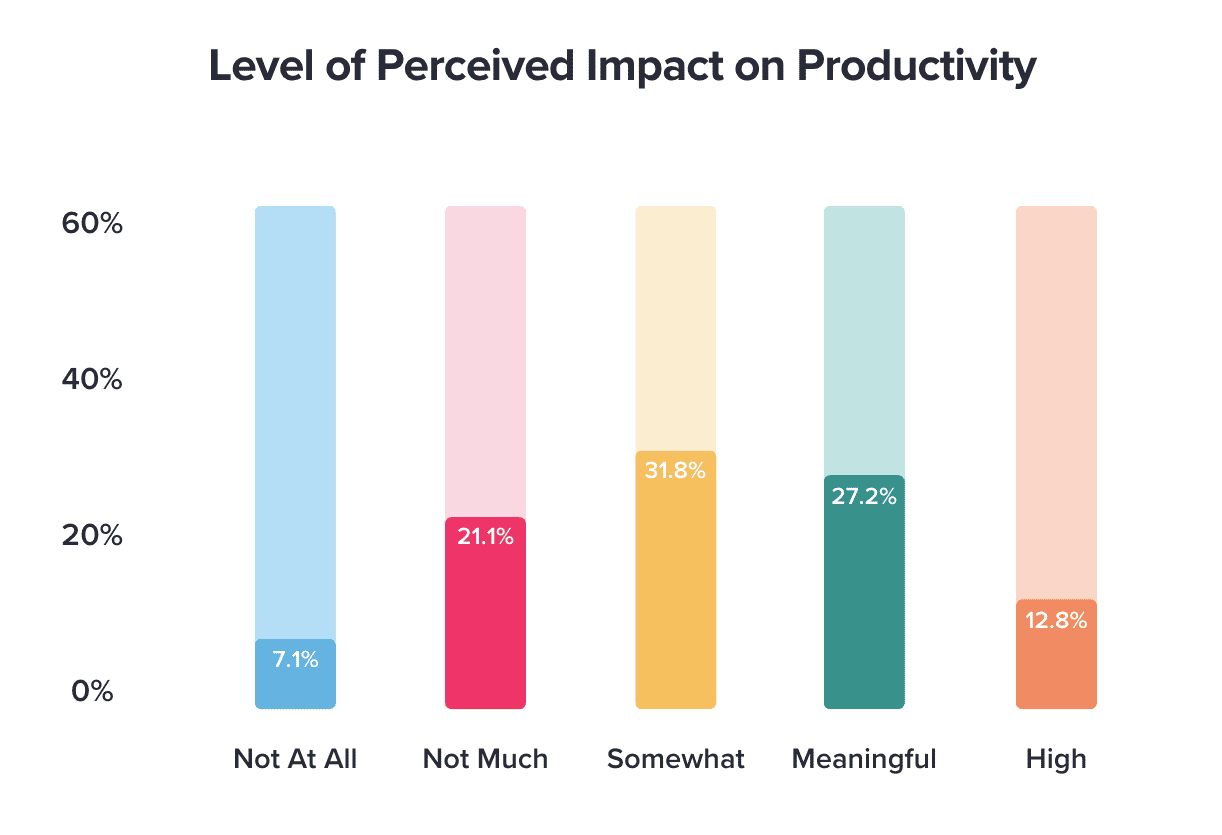
Emojis boost connection and collaboration for remote-first and hybrid workers
Zooming in, emojis have a bigger impact on connection and collaboration for respondents who work in a remote-first or hybrid setting. However, for people who work in an office environment, the impact of emojis is greater on their productivity. This may be because there are more opportunities in an office for incidental connection and socializing, as opposed to remote-first or hybrid settings, so office workers don’t rely as heavily on emojis to connect and collaborate.
Remote-first and hybrid workers use emojis the most 💻
This might not come as a surprise considering the above findings, as many remote-first workers often rely more on text based communications when working together, either online or asynchronously.
67% of Baby Boomers love seeing emojis in email, whereas Gen Z prefer to see them in instant messaging
Zooming out, when we look at the different generations of respondents, emojis are used in a variety of different communication tools.
For Gen Z (82%) and Millennials (87%), instant messaging (Slack, Google Chat, Microsoft Teams or similar) is the most preferred, whereas Gen X (84%) and Baby Boomers (85%) opt to include emojis most in text messaging (SMS).
Interestingly, across all generations, documents are mostly kept emoji-free. Gen Z (15%) may sometimes sprinkle them in, but you probably won’t see a 😇 or 🐶 in a doc from a Boomer (6%).
However, where email is concerned, the results are flipped. Boomers (67%) will be happy to see your emojis in an email while Gen Z (28%) may not need a lot of them to get the message.
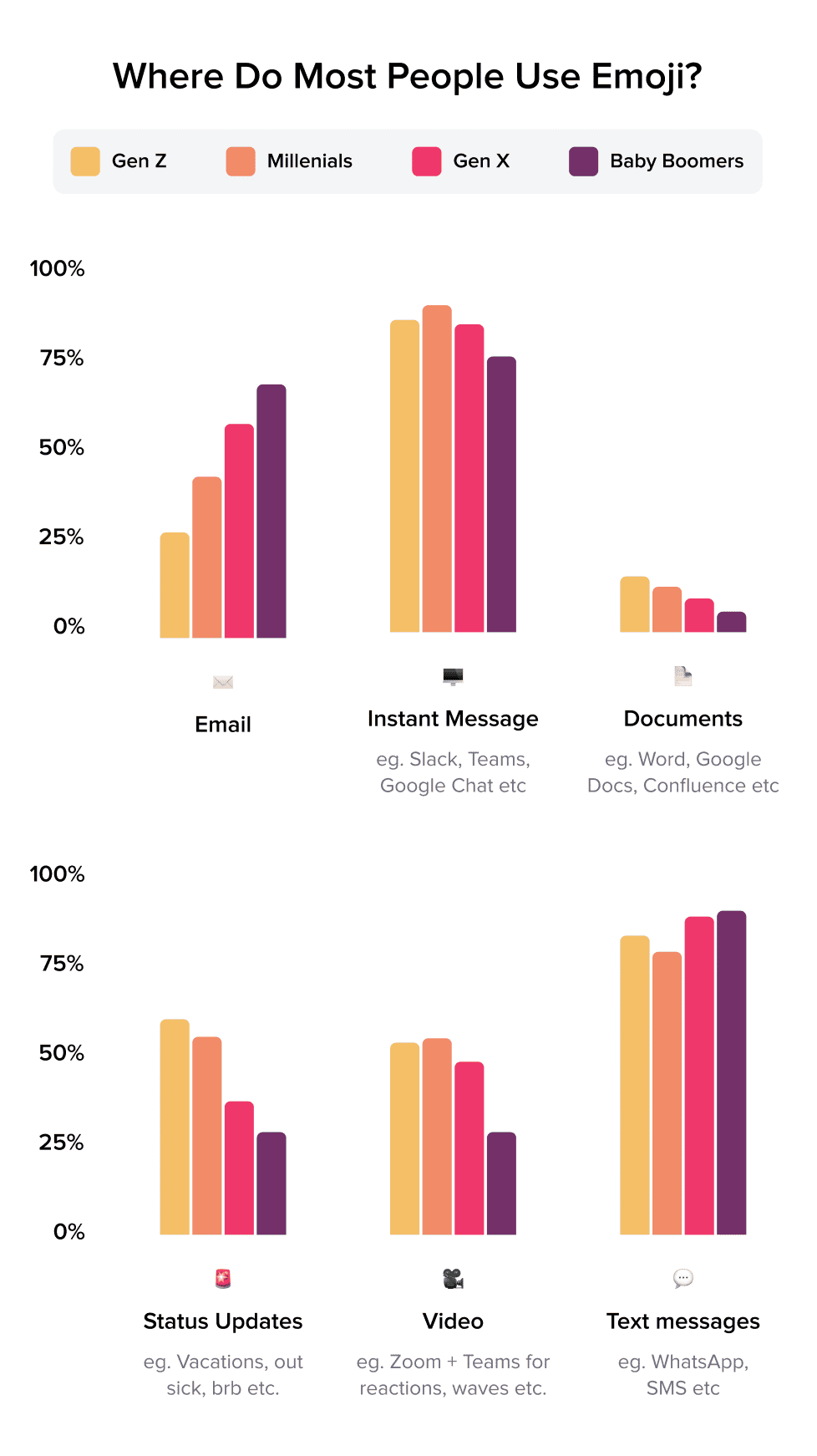
Who in the team uses emojis the most (and what emojis do they use)?
When it comes to frequency of use, 91% of respondents who identified as a Manager or Team Leader said they used them at work (with 49% admitting to using emojis daily). Closely followed by team members at 89% (46% daily) and interns at 79% (35% daily).
Are you curious about what emojis are the most used by managers in our study? Turns out they’re very similar to the ones used by both team members and interns. While all three groups have the 👍, 😊 and 😂emojis in common, the remaining two are different in flavor.
Managers use emojis to be supportive and offer praise (🙏👏), while team members and interns use emojis that are more expressive or responsive (❤️😁). This is perhaps reflective of the relationships between the three roles, but further study would be required to confirm this.
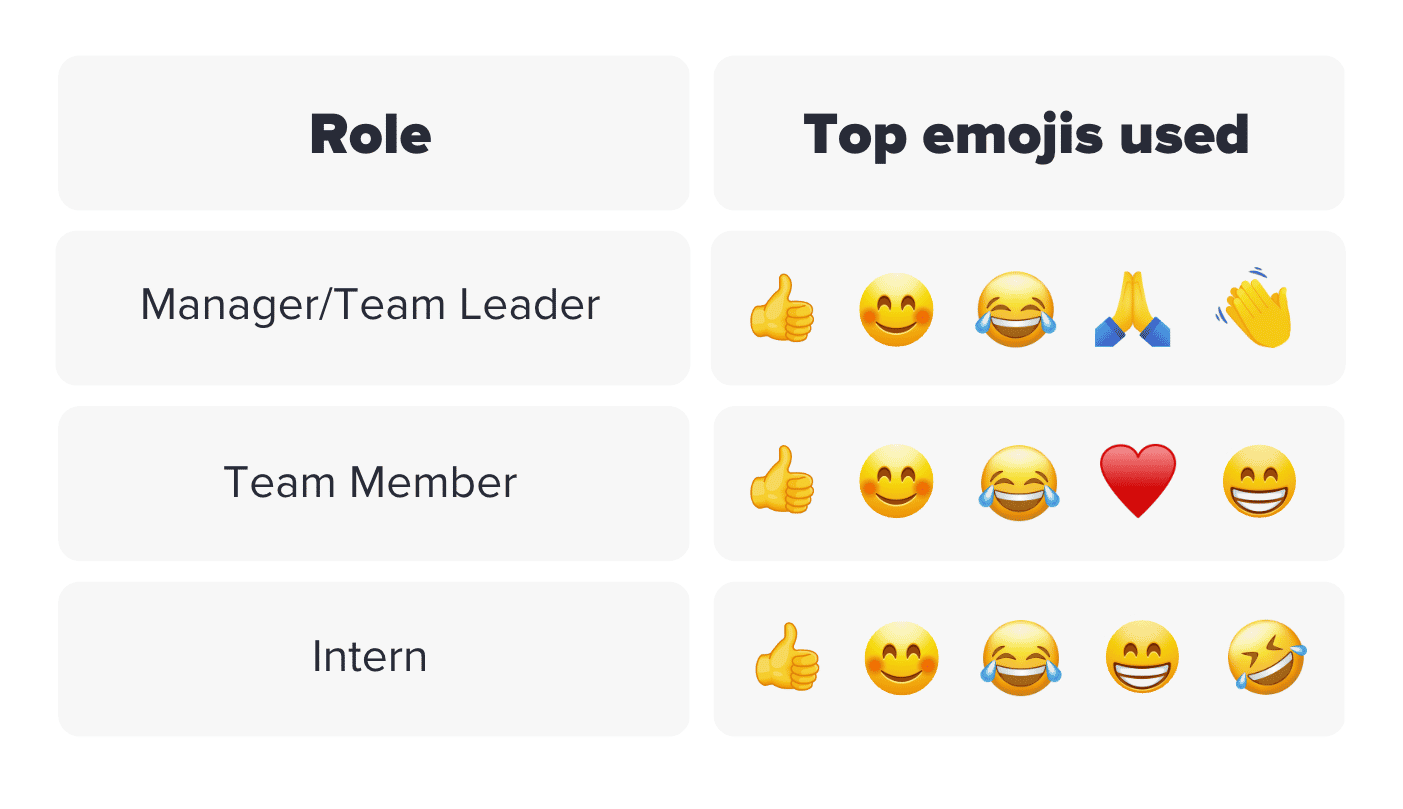
🤬🖕🍆💩🍑 Gen Z, Millennials and Gen X know these emojis are a no-no at work. Are Baby Boomers just trying to be polite?
Not many workplaces have a set of rules or conventions for how to use emojis. There might be guidelines around what is and isn’t appropriate for overall usage, but for individual emojis and their intended meaning, it’s culturally – and often workplace – specific.
A significant finding here is that Gen X, Millennials and Gen Z have intuitively learned what’s appropriate and what’s not when it comes to which emojis are a no-no at work. Their top 5 emojis are the same, just in slightly different orders when asked to rank them, while Baby Boomers only share two of those emojis (💩🤬).
Baby Boomers get a bad wrap when it comes to technology and keeping up with the younger generations nipping at their heels. But for a generation that hasn’t been using the Internet, let alone emojis, for their whole lives, they perhaps understand some of the nuance but might just be trying to be polite.
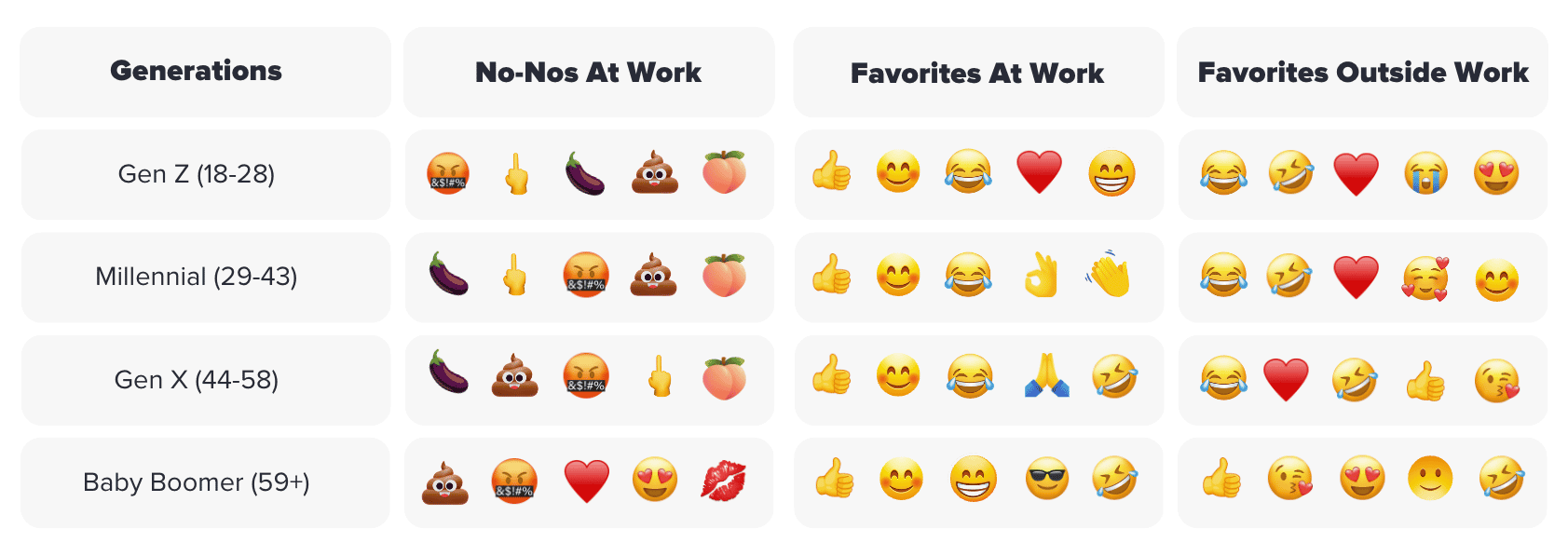
Out of 94 countries, Australia uses emojis the most at work 🐨🦘
As you may have experienced, emojis can have multiple meanings – and these meanings not only differ from context to context, they can also differ country to country, including how often they’re used.
To determine which country used emojis the most and least at work we compared the results of statistically significant samples from each country, with a large enough representation.
Based on this approach, interestingly, the USA ranks fifth highest Emoji users globally, preceded by:
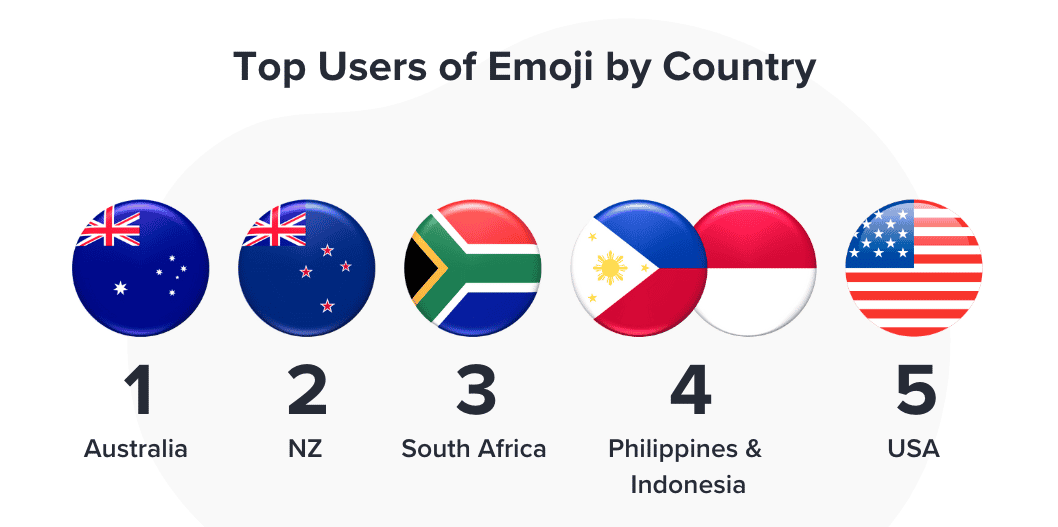
When it comes to the biggest daily users of emojis, South Africa leads with Australia and New Zealand following closely behind, with the Philippines and the USA bringing up the rear.
The bottom line: Emoji usage offers valuable insights into how our teammates think, feel and like to communicate at work
What we’ve learned is that there are different types of people who will naturally engage with emojis and equally, those who don’t. It’s important not to stereotype your teammates based on how much (or how little) they use emojis. But you can use F4S’ research into emoji usage to better understand each other and optimize connection, collaboration and productivity at work.
Introducing F4S for Zoom!
Want to learn how to use emojis for better time spent in Zoom? Discover your communication style – and those of the people you meet and work with – by signing up to F4S for Zoom.
Related Articles
What’s your communication style?
Learn how to connect with colleagues and boost workplace motivation.

Name Surname
Position, Company name

Name Surname
Position, Company name

Name Surname
Position, Company name

Name Surname
Position, Company name

Name Surname
Position, Company name

Name Surname
Position, Company name
Trusted by:


%201.svg)
.png)
Your submission has been received!

Hack your wellbeing, productivity and goals
Programs are created by expert coaches & delivered by our incredible A.I. Coach Marlee. Sessions only take 5-15 minutes and are 100% personalized to fit your unique traits and goals.